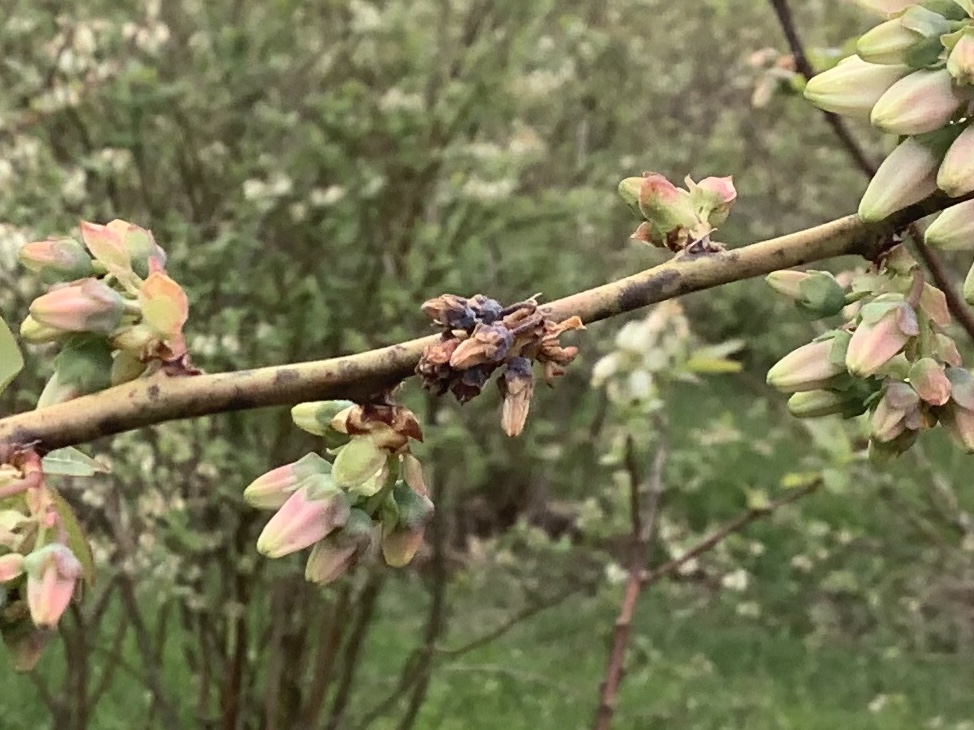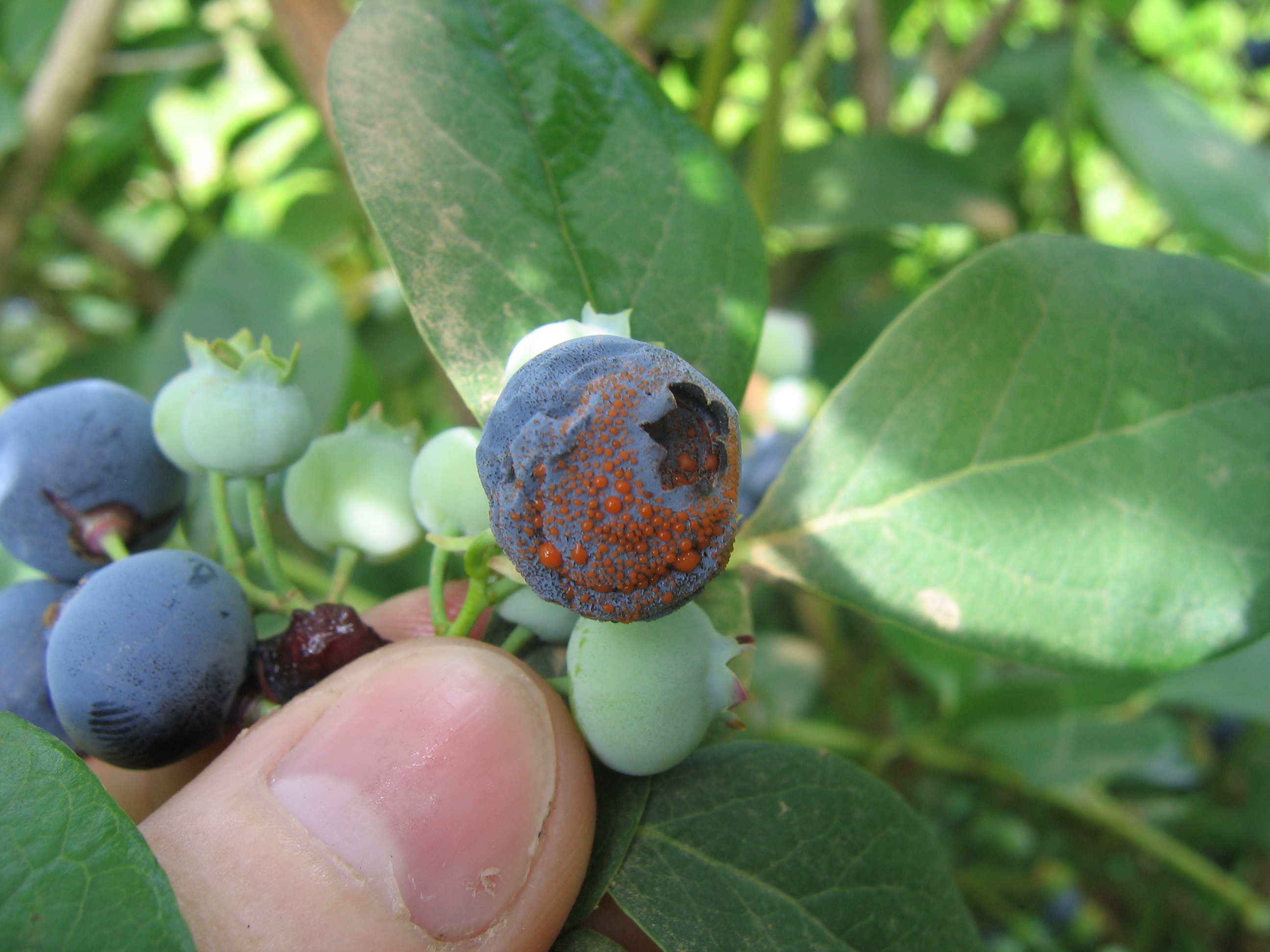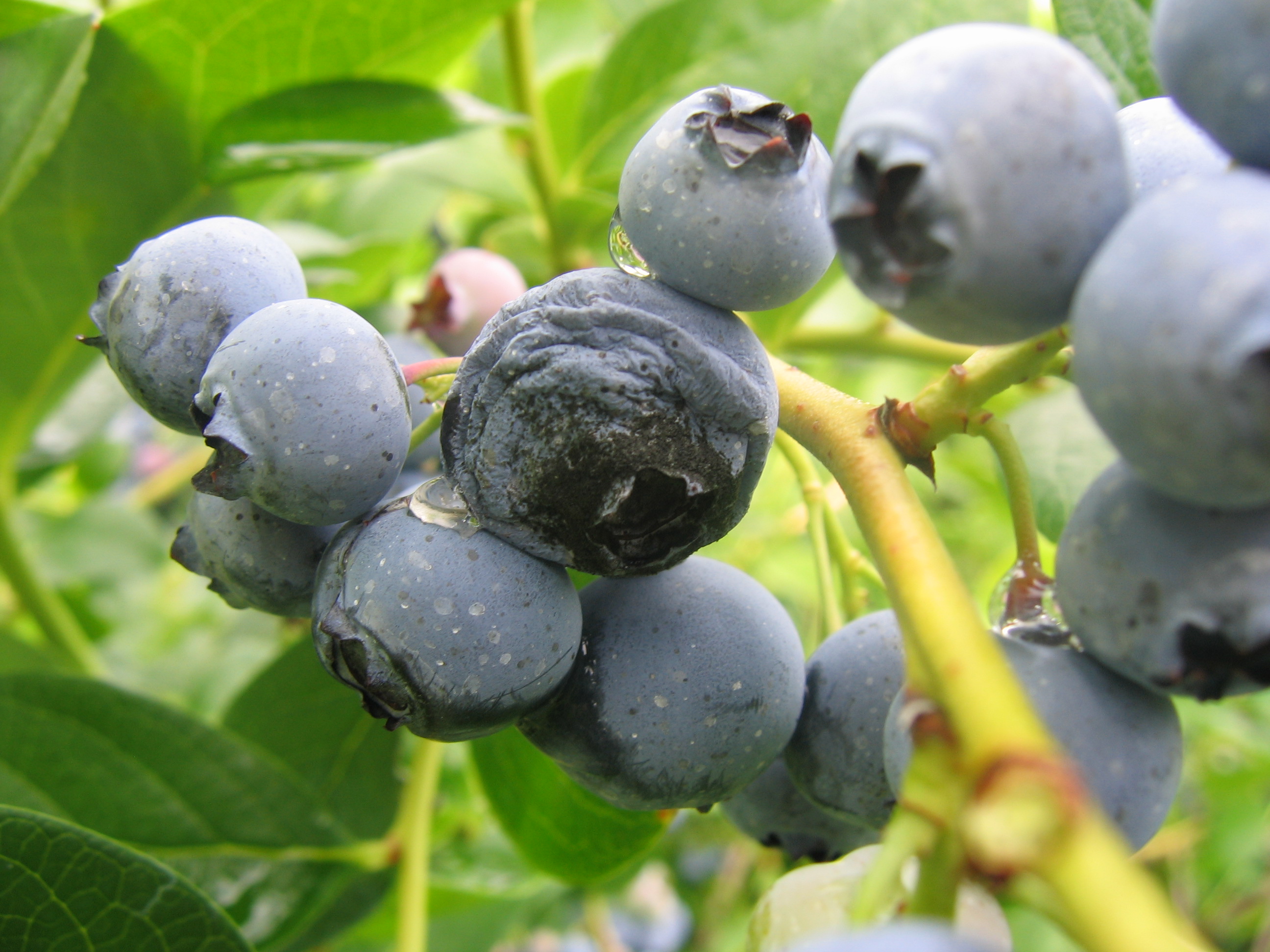Blueberry growers need to focus on Anthracnose fruit rot as bloom ends
During bloom, it makes sense to focus on managing fruit rot diseases, and new information and tools are available to help.

Early in the season, blueberry growers focus on controlling mummy berry shoot blight. During early bloom, the focus shifts to controlling the blossom infection phase of mummy berry. Mummy berry blossom sprays target blooms soon after they open to prevent infection.
During bloom, we also see blossom blight when flower clusters collapse from a disease infection. Mummy berry and blossom blight have both been observed in Michigan blueberries last week (Photos 1-2). Damage from the May 9, 2020, freeze is spotty but widespread. Freeze damaged tissues are more susceptible to fungal infections. Some growers have submitted samples to Michigan State University Plant & Pest Diagnostics and secondary fungi are colonizing these dead tissues.

After full bloom, grower’s disease priority should be fruit rots. The main two fruit rot diseases in Michigan blueberries are anthracnose and alternaria fruit rot. Anthracnose can make initial infections to green fruit during and after bloom. These infections are latent (hidden) and are often not possible to detect until later in the season.
Anthracnose fruit rot is caused by the fungus Colletotrichum acutatum. This disease overwinters on dead twigs, old fruit trusses and bud scales. Spores from overwintering infections are splash dispersed from onto developing fruit during early growth. Good infection conditions are long wetness periods and warm temperatures. These fruit infections continue without symptoms until fruit ripen (Photo 3).

In severe scenarios, 10-20% preharvest and 100% postharvest losses have been reported. The sporulation causes gelatinous orange ooze to form on the outer surface of the berry under humid conditions (Photo 4); under dryer conditions, the fruit simply shrivel. Fruit infected during bloom infects other fruit during harvest. Managing this disease is much easier when protecting green fruit. Ripening fruit is much more susceptible to infection and harder to protect. Strive to protect green fruit reducing the inoculum in the field as the fruit ripens.

Alternaria fruit rot infections often occur as in the field later as fruit ripens (Photo 5). MSU Extension has more information on anthracnose (bulletin E3039) and alternaria fruit rot (bulletin E3441) in blueberries.

Main principles for anthracnose control during the season
- Minimize overhead irrigation (wetting events).
- Time irrigation to reduce the time leaves and fruit are wet.
- Time irrigation to coincide with natural dew formation.
- Use a preventative fungicide program (see table below)
New information and tools are available for anthracnose control
Several new fungicides are now labeled in blueberries for anthracnose control. The Small Fruit and Hop Pathology Program at MSU has found them to provide moderate to excellent control for anthracnose fruit rot. See E0154 Michigan Fruit Management Guide for specific information about efficacy. Some of these products include Kenja (FRAC 7), Propulse (FRAC 3/7), Stargus (FRAC BM02) and Lifegard (FRAC P06). See Table 1 for the most recent efficacy ratings for anthracnose and alternaria fruit rot control.
During 2019, the Small Fruit and Hop Pathology program actively surveyed for fungicide resistance in Colletotrichum populations. We discovered significant fungicide resistance to FRAC 11 fungicides (e.g., Abound, Pristine and Quilt Xcel). At this time, we recommend utilizing these products cautiously. Do not use them as your primary fungicides and avoid using them during critical spray windows due to the presence of this resistance. As we learn more, we will continue to update the industry on the presence of fungicide resistance within Michigan.
|
Table 1. Recently updated blueberry fungicide efficacy ratings for fruit rot control. |
|||
|---|---|---|---|
|
Fungicide |
FRAC2 |
Anthracnose3 |
Alternaria3 |
|
Abound1 |
11 |
++++1 |
+++1 |
|
Aliette |
P07 |
+++ |
+++ |
|
Botector |
NC |
? |
? |
|
Captan |
M04 |
++/+++ |
+ |
|
Captan + Elevate |
M04 + 17 |
++/+++4 |
+ |
|
Elevate |
17 |
0 |
0 |
|
Indar |
3 |
0 |
+ |
|
Kenja4 |
7 |
+++4 |
? |
|
Lifegard |
NC |
++ |
+ |
|
Luna Tranquility4 |
7 + 9 |
++4 |
? |
|
Omega |
29 |
++/+++ |
++ |
|
Phostrol |
P07 |
++ |
++ |
|
Pristine1 |
11/7 |
++++1 |
++/+++1 |
|
Proline |
3 |
? |
? |
|
Propulse4 |
3 + 7 |
++4 |
? |
|
Quilt-Xcel1 |
11 + 3 |
+++1 |
? |
|
Regalia |
NC |
++ |
? |
|
Ridomil |
4 |
0 |
0 |
|
Serenade + NuFilm |
44 |
? |
? |
|
Serifel |
44 |
++ |
? |
|
Sil-Matrix |
NC |
+++ |
0 |
|
Stargus |
44 |
++ |
? |
|
Sonata + NuFilm |
44 |
? |
? |
|
Switch |
9/12 |
+++ |
++++ |
|
Tilt |
3 |
? |
? |
|
Ziram (4 lb.) |
M |
+++ |
++ |
|
1 - Resistant isolates detected throughout Michigan, be cautious when using these materials during key infection events. |
|||



 Print
Print Email
Email




